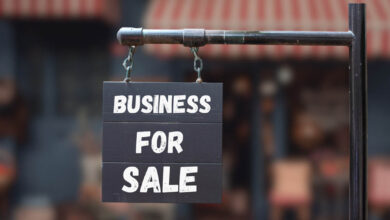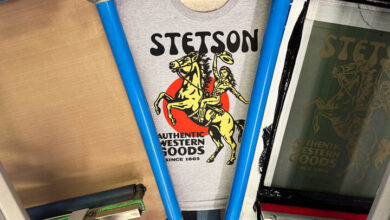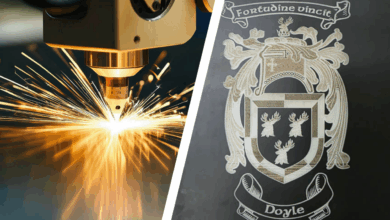T-shirts have long been the go-to item for garment decorators, but what if I told you that sticking to just tees might be holding your print shop back from all it can do? If you’re not diversifying, you’re missing out and leaving money on the table.
Now, diversifying can be daunting, so you have to do things right from the get-go. I like to say, “You gotta have the toys to do it right!” — meaning, with the right equipment and decoration techniques, you can expand your shop and meet new customer demands. This is exactly what I’ll be talking about in this article. We’ll get into some of the coolest products you can bring to your shop, plus the best decoration techniques and investments for each. Let’s get into it!
Diversify your product lineup: More than just tees
Now is the time to branch out your offerings. Having different types of products as part of your lineup, other than T-shirts, will help boost your print shop’s profitability and establish your business as a one-stop solution for customers. Product categories like hats, aprons, jackets, and even home textiles open more options for your customers, and the bigger the options, the bigger the orders, which also leads to better customer retention.
Hats: Eye-catching headwear
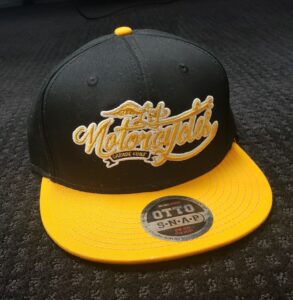 Hats are a fantastic addition to any print shop’s offerings, giving you tons of branding opportunities and a wide range of styles and fabrics to choose from. From five-panel truckers to six-panel fitted, unstructured dad hats, and even super trendy foam truckers — there’s literally a hat for every type of customer. The same goes for fabrics: whether your client wants cotton, poplin, corduroy, or even cork — you’ve got them covered. Plus, hats come in all sorts of color options, making them perfect for brands that need to match specific color palettes.
Hats are a fantastic addition to any print shop’s offerings, giving you tons of branding opportunities and a wide range of styles and fabrics to choose from. From five-panel truckers to six-panel fitted, unstructured dad hats, and even super trendy foam truckers — there’s literally a hat for every type of customer. The same goes for fabrics: whether your client wants cotton, poplin, corduroy, or even cork — you’ve got them covered. Plus, hats come in all sorts of color options, making them perfect for brands that need to match specific color palettes.
- Pro tip: Millions of caps are imported into the U.S. every year, making them a high-demand, high-margin item. But even with all that importing, there’s still room for homegrown success — custom hats let you offer personalization that big manufacturers just can’t match.
- Why it’s a smart move: Hats are practical, highly visible, and universally loved by industries ranging from breweries and sports teams to corporate giveaways. Adding customized headwear to your lineup doesn’t just help you serve your existing customers better — it opens up fresh sales opportunities too.
Aprons: Functional branding
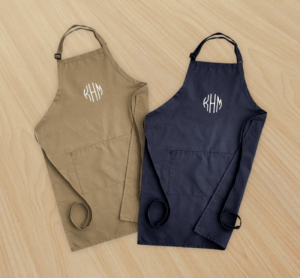 Until recently, aprons were mostly just for the kitchen. But now, they’ve become a stylish and practical branding item used in cafes, breweries, salons, and craft shops. Offering custom aprons gives you a functional product to add to your portfolio, perfect for staff uniforms or promotional giveaways. With their practicality and branding potential, aprons are a no-brainer.
Until recently, aprons were mostly just for the kitchen. But now, they’ve become a stylish and practical branding item used in cafes, breweries, salons, and craft shops. Offering custom aprons gives you a functional product to add to your portfolio, perfect for staff uniforms or promotional giveaways. With their practicality and branding potential, aprons are a no-brainer.
- Pro tip: Since aprons are relatively low-cost, try bundling them with larger custom uniform packages that include hats and polos. This can bump up your average order value and give your clients a complete branded solution.
- Why it’s a smart move: Aprons have tons of branding space, which is especially useful for companies in the food or service industries. Whether your clients need aprons for staff uniforms or as giveaways at a corporate event, this versatile item could easily become a go-to product in your shop.
Jackets: High-ticket items
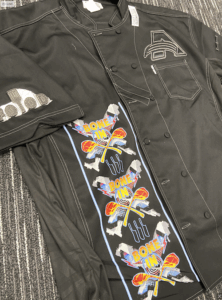 If you want to offer high-margin, high-ticket products, jackets are the perfect addition. Whether it’s for corporate branding, sports teams, or event merchandise, jackets give you a big canvas for logos and custom designs. From lightweight windbreakers to fleece jackets, the demand is high, and the price points allow for significant profit margins.
If you want to offer high-margin, high-ticket products, jackets are the perfect addition. Whether it’s for corporate branding, sports teams, or event merchandise, jackets give you a big canvas for logos and custom designs. From lightweight windbreakers to fleece jackets, the demand is high, and the price points allow for significant profit margins.
- Pro tip: Not all jackets need a basic chest logo. Think big — get creative with designs on sleeves, backs, or collars. Also, consider offering tackle-twill lettering for an upscale, textured look with minimal stitching.
- Why it’s a smart move: Jackets are high-value, durable items that only get better with time. They’re worn year after year, making them one of the best products for brand visibility. Plus, they offer way more branding space than your average T-shirt, giving you room for unique and creative placements.
Bags: Versatile gear
From canvas totes to backpacks and duffle bags, bags are super-hot items for corporate gifts, event giveaways, and retail merchandise. They’re practical, used daily, and offer a long-lasting branding opportunity. There’s no limit to how they can be personalized, from screen-printed logos on canvas to embroidered designs on backpacks.
- Pro tip: Offering personalized bags with names or initials can really boost the perceived value and profit margin. Clients are willing to pay extra for that personal touch — it makes the bag a more memorable and functional gift.
- Why it’s a smart move: Bags are a staple in almost every industry. By offering them, you’re not only diversifying your range but also giving customers something they can use in everyday life, which helps boost brand exposure.
Hoodies & sweatshirts: Elevated casual wear
 Gone are the days when hoodies and sweatshirts were just casual wear. Today, they are essential branding tools. From corporate retreats to sports teams and school merchandise, custom hoodies are a top favorite across all demographics. With plenty of space for logos and designs, plus higher price points than T-shirts, they offer great profit margins.
Gone are the days when hoodies and sweatshirts were just casual wear. Today, they are essential branding tools. From corporate retreats to sports teams and school merchandise, custom hoodies are a top favorite across all demographics. With plenty of space for logos and designs, plus higher price points than T-shirts, they offer great profit margins.
- Pro tip: Combine embroidery with printing on hoodies for a premium look. For example, add an embroidered logo on the chest and a detailed DTF design on the sleeve or hood for a layered, custom appearance.
- Why it’s a smart move: Hoodies and sweatshirts give you a chance to increase your profit margins while offering something trendy and versatile. Customers love them, especially when they’re soft, cozy, and unique.
Home textiles: Don’t overlook home goods
 Demand is growing for custom home goods like pillows, blankets, towels, and even throws. Whether for corporate gifts, event giveaways, or unique boutique items, personalized home textiles are an awesome way to stand out and offer something special.
Demand is growing for custom home goods like pillows, blankets, towels, and even throws. Whether for corporate gifts, event giveaways, or unique boutique items, personalized home textiles are an awesome way to stand out and offer something special.
- Pro tip: Partner with local interior designers or real estate agents to offer personalized home goods as client gifts. It’s a smart way to break into new markets while adding extra value to what you offer.
- Why it’s a smart move: Home textiles come with endless customization options and bring your products right into everyday living spaces, providing long-term brand exposure. They’re practical, functional, and well-loved as gifts, which keeps customers coming back.
Techniques that work across all products
Having explored a range of products, let’s talk about the techniques that apply to all of them. Whether it’s hats, bags, jackets, or home textiles, these methods will help you expand your services and deliver high-quality results across the board.
Direct-to-film (DTF) printing
DTF is a versatile and cost-effective method for decorating all kinds of products, from hats to home textiles. Full-color designs are printed on transfer film and applied using a heat press. It’s a great choice for items like polyester bags, aprons, and jackets.
- Investment: $7.5K – $25K for a DTF printer and $750 – $1.5K for a heat press.
- Pro tip: Use DTF to create small or high-volume runs. DTF machines nowadays are fast, cost-effective, and perfect for printshops that are just starting or that already have a large customer base.
Direct-to-garment (DTG) printing
DTG is perfect for high-detail, vibrant prints directly onto cotton or cotton-blend fabrics. Items like hoodies, jackets, bags, and home textiles work especially well with DTG. The beauty of DTG is that it allows for full-color designs with a soft feel and precise detail, making it perfect for fashion-forward or artistic pieces.
- Investment: $12K – $25K for a DTG printer.
- Pro tip: DTG shines on cotton products, but it doesn’t work as well on poly blends. Always do a fabric test to make sure the ink sets properly. For smaller shops, consider offering DTG for low-volume, high-quality items that can be sold at premium prices.
Embroidery
It’s a tried-and-true technique. Whether it’s caps, jackets, bags, or blankets, embroidery adds texture, durability, and a premium finish to a variety of materials like canvas and denim. Raised, textured designs make any artwork and intricate patterns pop, while the durability ensures the products last for years.
- Investment: $10K – $20K for a multi-color, single-head machine.
- Pro tip: For hats and thicker items like jackets, make sure your machine can handle the product’s material. Test out different models before finalizing your options for customers.
Heat transfer vinyl (HTV)
HTV has been a trusted method for decorating items like bags, aprons, and jackets. With the rise of specialty vinyl like puff, flock, glitter, and neon, HTV is still a go-to for vibrant, textured effects. This technique is a great alternative when you need to create more detailed designs with a wider range of colors, especially for polyester materials.
- Investment: $750 – $2.5K for a vinyl plotter, $500 – $2.5K for a heat press.
- Pro tip: HTV is ideal for specialty designs. Offer your clients a variety of textures to make their products stand out, especially for retail or promotional items.
UV DTF
UV DTF is made for hard surfaces like glass, mugs, and phone cases. It lets you print vibrant, durable designs directly onto these items without pretreating. This opens up the chance to expand into the booming promotional products market.
- Investment: $20K – $30K for a UV DTF printer.
- Pro tip: UV DTF is an excellent way to break into promotional product decoration, unlocking new revenue streams with minimal labor.
Laser engraving
The general understanding about laser engraving is that it is only used for hard surfaces like wood, metal, or leather. But, the truth is that you can also use this technique on a variety of fabrics, making it a great option for items like bags, aprons, T-shirts, and even hoodies. Laser technology is very precise, which allows for intricate, detailed designs, giving your products a unique, premium look.
- Investment: $8K – $20K for a laser engraving machine.
- Pro tip: When working with laser equipment, always test your settings to avoid burning or damaging the material.
Mixed-media techniques: Unlocking unique results
Mixing different techniques — like combining embroidery with DTF or laser engraving with heat transfers — unleashes endless creative possibilities for your print shop. Not only does mixed media boost the perceived value of the product, but it also helps you stand out in a crowded market. A great example is a chef coat I had a blast working on this summer. I combined various techniques, and the result was a one-of-a-kind piece with a multi-textured, premium feel.
- Pro tip: Offer mixed-media designs as limited-edition or high-end items to increase profitability. Customers are willing to pay more for unique products that stand out from typical decoration methods.
Final thoughts: Diversify & thrive
Expanding your product lineup and mastering these techniques will not only help your print shop stay competitive but also open new revenue streams and position your brand as the go-to solution for all things custom. Again, “You gotta have the toys to do it right!” — investing in the right tools and techniques ensures you deliver quality products your customers will love. Now’s the time to step beyond the T-shirt and turn your print shop into a full-service powerhouse!

